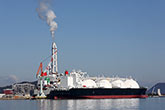


After a highly volatile 2020, shipbroker Simpson Spence Young (SSY) has released its 2021 Outlook Report, in which it reviews the next 12 months and highlights areas of particular interest.
The report looks at various drivers of the shipping markets, including how the developing emissions regulations may affect commercial fleets and shipping investments.
Contributions come from a range of senior research and broking experts and cover dry bulk, tanker, and gas freight markets; shipping investments; CO2 emissions; FFAs; metals; and energy derivatives. Together, they give a taste of what to look out for in 2021.
SSY Chairman Mark Richardson said: “The aim of this report is to bring you a concise view of what we will be looking out for in the next 12 months. We are still in the midst of the global pandemic and understanding the long-term impact, and the recovery that should follow, will be crucial. We’ll be watching closely how this plays out to ensure we can provide the most up to date insights to our clients, underpinning our views with the latest research and data.”
“Significantly for seaborne iron ore trade, soaring prices indicate not just firm demand, but also actual and anticipated constraints on supply. For the main arterial Capesize iron ore trades, the ability of mining companies, especially those in Brazil, to raise output will be crucial in shaping this year’s trade growth.”
“Atlantic basin non-OPEC oil supply will be underpinned by sustained flows of Brazilian crude and Norway ending government-imposed oil cuts. With Atlantic basin refinery closures and run cuts, a surplus of Atlantic crude could be prime for shipment to Asia, which has recovered faster from the COVID outbreak and is adding new refining capacity, especially in China.”
“If we see a cold February and March, then the shipping market could see an overall positive Q1. The market will more than likely slide during March at the latest, when there is a significant amount of LNG new buildings that are delivering at the back end of Q1.”
“The IMO can point to some early success, with most studies indicating a reduction in average carbon intensity over the past decade associated with more efficient designs and slower steaming speeds. The net effect, which is widely agreed, is that CO2 emissions have lagged growth in fleet capacity over the past decade.”